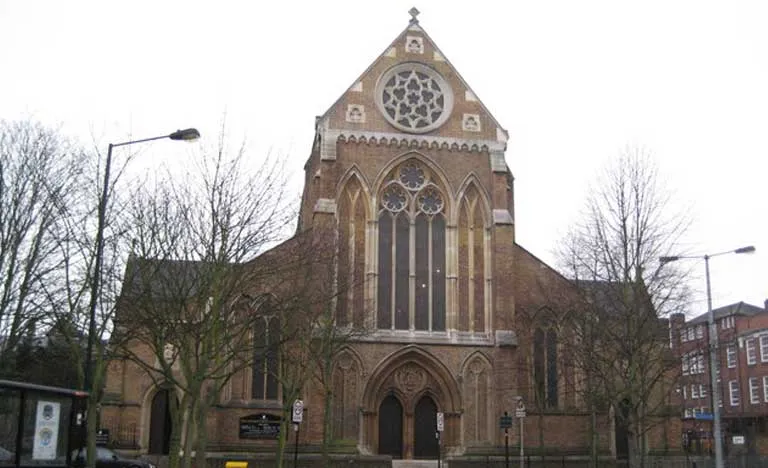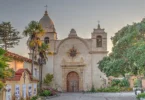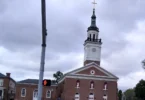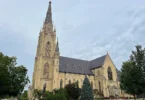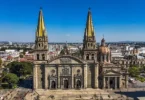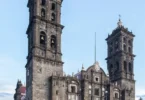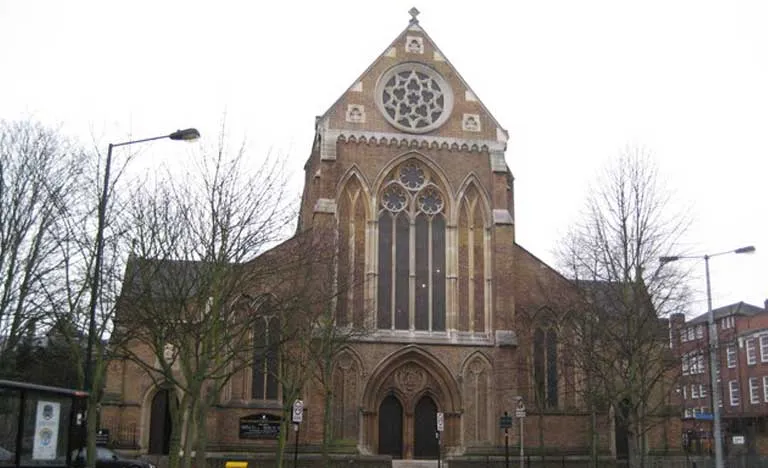
Introduction
Saint Dominic’s Church, London is the Diocesan Shrine of Our Lady of the Rosary, a parish based in one of the largest Catholic churches in London. As a Marian shrine, it is a centre for Catholic culture and thought, and a focus of liturgical beauty and devotion.
London’s Rosary Shrine is the main church of the Dominican friars in England, completed in 1883 as a unique testimony in stone and glass to the power of the prayer of the Rosary.
When the church was completed in 1883, it was the first in the world to have distinct chapels, each with its own carved stone altarpiece, dedicated to the Mysteries of the Rosary. Fourteen side chapels of the Joyful, Sorrowful, and Glorious Mysteries flank the nave accessed by a great processional ambulatory, and the fifteenth Mystery of the Dominican Rosary – the Coronation of Our Lady in heaven – is represented in colourful stained glass around the High Altar, which itself is crowned with a great carved stone ‘Exposition Throne’ for the Blessed Sacrament.
To this day, this Church, London remains one of the few in the world with separate chapels for each Mystery of the Rosary, and we believe it is unique in having sculpted depictions of the Mysteries. This architectural form invites the pilgrim to walk from chapel to chapel, and so to enter into God’s space, to contemplate the mysteries of his love using the sacred art in each Rosary Chapel, and to journey towards the vision of heaven depicted above the High Altar. This ‘stational’ way of praying the Rosary, processing around the church and meditating on sacred art, was uniquely begun in this Rosary Shrine church; a profoundly Dominican way of praying and journeying, as St Dominic often did.
Inspired by the prayers of a 19th century English devotee of Our Lady of Lourdes, this monumental church, reputedly the fifth largest in London, became the first in the world to have one distinct chapel with its own altar and a beautiful artistic altarpiece for each of the Fifteen Traditional Mysteries of the Rosary; a devotion which is promoted by the Dominican friars.
Here, one can pray the Stational Rosary processing from one chapel to the next as one progresses through the Mysteries of the Rosary. In total there are 17 chapels, 20 altars, and a great Sanctuary with an Adoration Throne that surmounts the High Altar, choir stalls carved in Belgium, and behind the gleaming Lady Chapel, there’s a beautiful garden for the Luminous Mysteries of the Rosary, with a uniquely commissioned statue from a Florentine sculptor of Our Lady of Cana.
The Church too, is filled with unique statuary, vibrant stained glass that spans over a hundred years, gilded walls, carved and painted angels, oil paintings of the Stations of the Cross and the death of St Dominic, family monuments such as the Fortes cue monument, and a memorial for the Great War inscribed by Eric Gill.
This great Victorian church is a testimony to the ambition and faith of 19th century Catholics, and it stands as a visible sign of the power of the humble prayer of the Rosary to move and inspire us even today.
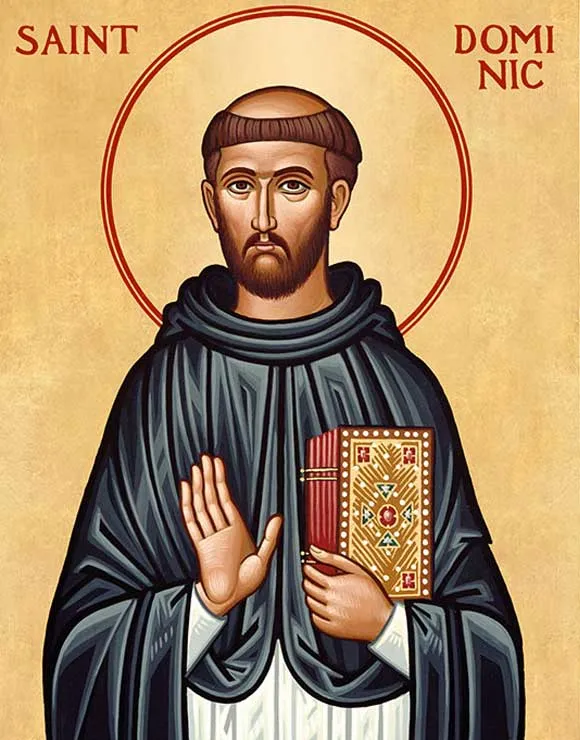
Saint Dominic's Church, London
St Dominic’s Priory Church (formally named “Our Lady of the Rosary and St Dominic”) is one of the largest Catholic churches in London. The church is Grade II listed building on the National Heritage List for England. It has been served by the Order of Preachers (Dominicans) since 1861, the community living in the adjacent Priory. In October 2016, the church was solemnly inaugurated by the Cardinal Archbishop of Westminster, Vincent Nichols, as a diocesan shrine, with a designated mission of promoting the Rosary.
History of Saint Dominic's Church, London
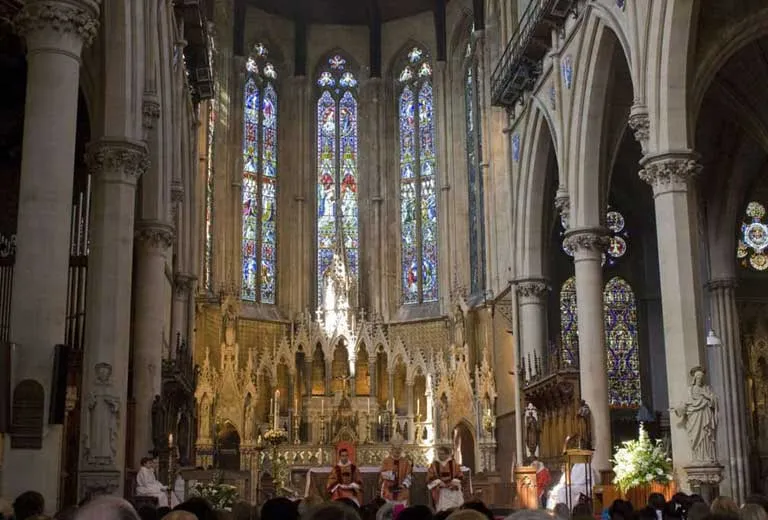
The Dominican Friars came to the area in 1861 with a community of Friars in the Priory, a community of Dominican Sisters nearby in Constantine Road and a group of Lay Dominicans who meet each month at the Priory. The priory was opened in 1867 and the Priory Church dates from 1883. The church was opened largely thanks to Countess Tasker, its great benefactress. The road leading down to the Priory (Tasker Road) was named in her memory.
In 1900 a pillar from the chapter house of the London Black Friars (the medieval predecessor of St Dominic’s Priory) was discovered during archaeological work in Blackfriars and was removed to the east end of St Dominic’s church. The Priory Church is still named Our Lady of the Rosary and Saint Dominic, as the current notice board makes clear. In 2021 the apse and High Altar of the church underwent cleaning and restoration including the re-gilding of the diapered walls of the apse. The Stations of the Cross, painted by Philip Westlake in 1887, were also restored and a new lighting system installed in the fourteen Rosary Chapels.
During the 1990’s the Traditional Catholic Mass (in the Roman Rite, rather than the Dominican Rite) was re-established at St. Dominic’s at 11.15 am every Sunday. This was by request of the late Cardinal Hume. Currently a Sung Mass in the traditional Dominican rite is sung in Latin every Sunday at 6pm, and this is celebrated at the High Altar. The 12 noon Solemn Mass in the Ordinary Form is also celebrated at the restored High Altar every Sunday. The tablet to the soldiers from the parish who died in World War I.
Two memorials in the church commemorate individuals who were killed in World War I. A large stone tablet by the main door to the church lists the names of soldiers from the area who died in the war. It is made from a large block of stone from a quarry from the French battlefields and was unveiled in 1921. The lettering of the tablet was carved by Eric Gill. A sculpted stone statue of Joan of Arc by the Rosary Chapel marks the death of a soldier killed at Ypres in 1915.
Architecture of Saint Dominic's Church, London
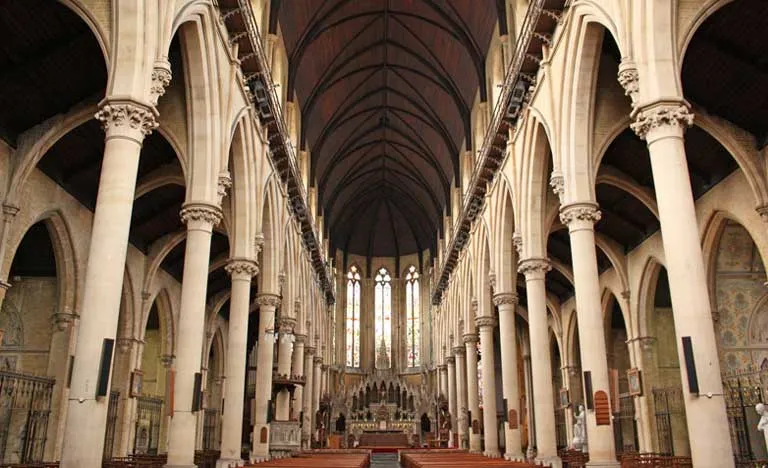
The design is based on the structure of the Rosary prayer: fourteen side chapels flank each side of the nave. Each chapel commemorates a Mystery of the Rosary: Joyful, Sorrowful, and Glorious. The fifteenth Mystery (the 5th Glorious Mystery) is depicted in the apse of the church around the main High Altar. It is thought that when this church was completed in 1883, it was the first in the world to have distinct side chapels for each Mystery of the Rosary.
Each chapel has its own altar with a stone-carved reredos depicting a particular Mystery of the Rosary. The Luminous Mysteries, added by Pope John Paul II in 2002, are commemorated in a Rosary Garden located behind the Lady Chapel of the church, and accessible via the Lady Chapel porch or by Alan Cheales Way. The church was built by Charles Alban Buckler (1824-1905), the son of John Chessell Buckler who designed numerous churches of which this was probably his best.
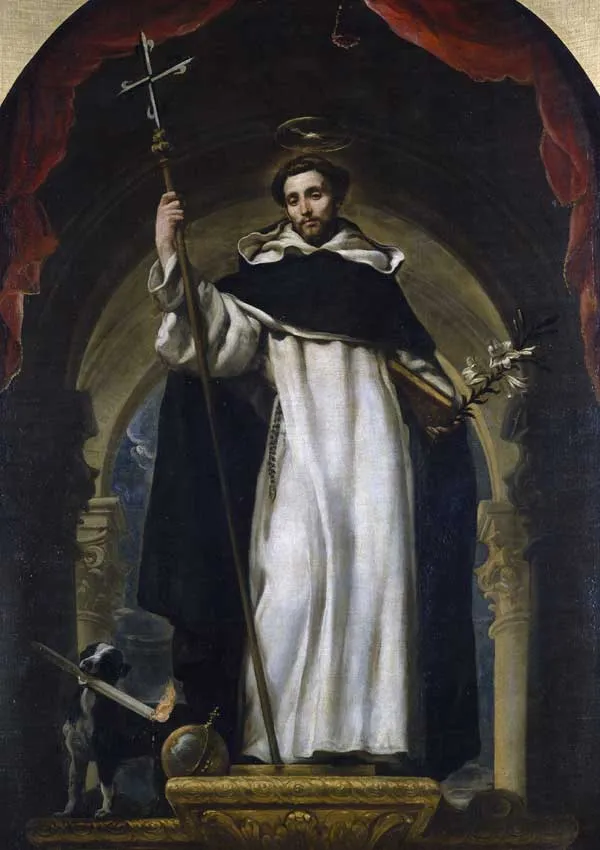
Feast Day – 7th October
The Feast of Our Lady of the Rosary formerly known as Feast of Our Lady of Victory and Feast of the Holy Rosary is celebrated on 7 October every year.
Dominic is remembered in the Church of England with a Lesser Festival on 8th August.
Mass Time
Weekdays
Saturdays
Sundays
Church Visiting Time
Contact Info
St Dominic’s Priory & Rosary Shrine,
Southampton Road,
London NW5 4LB
Phone No.
Tel : +44 20 7482 9210
Accommodations
How to reach the Shrine
London Heathrow Airport (LHR) in Hounslow, London, England is the nearby Airport to the Shrine.
Belsize Park Underground Station in north-west London, England is the nearby Train Station to the Shrine.

